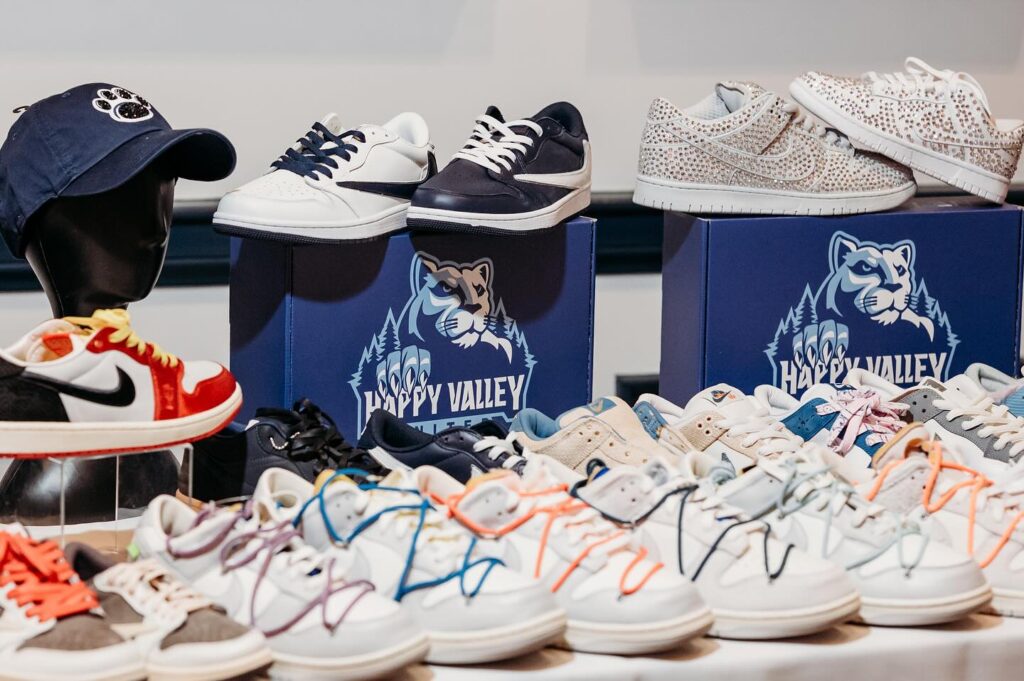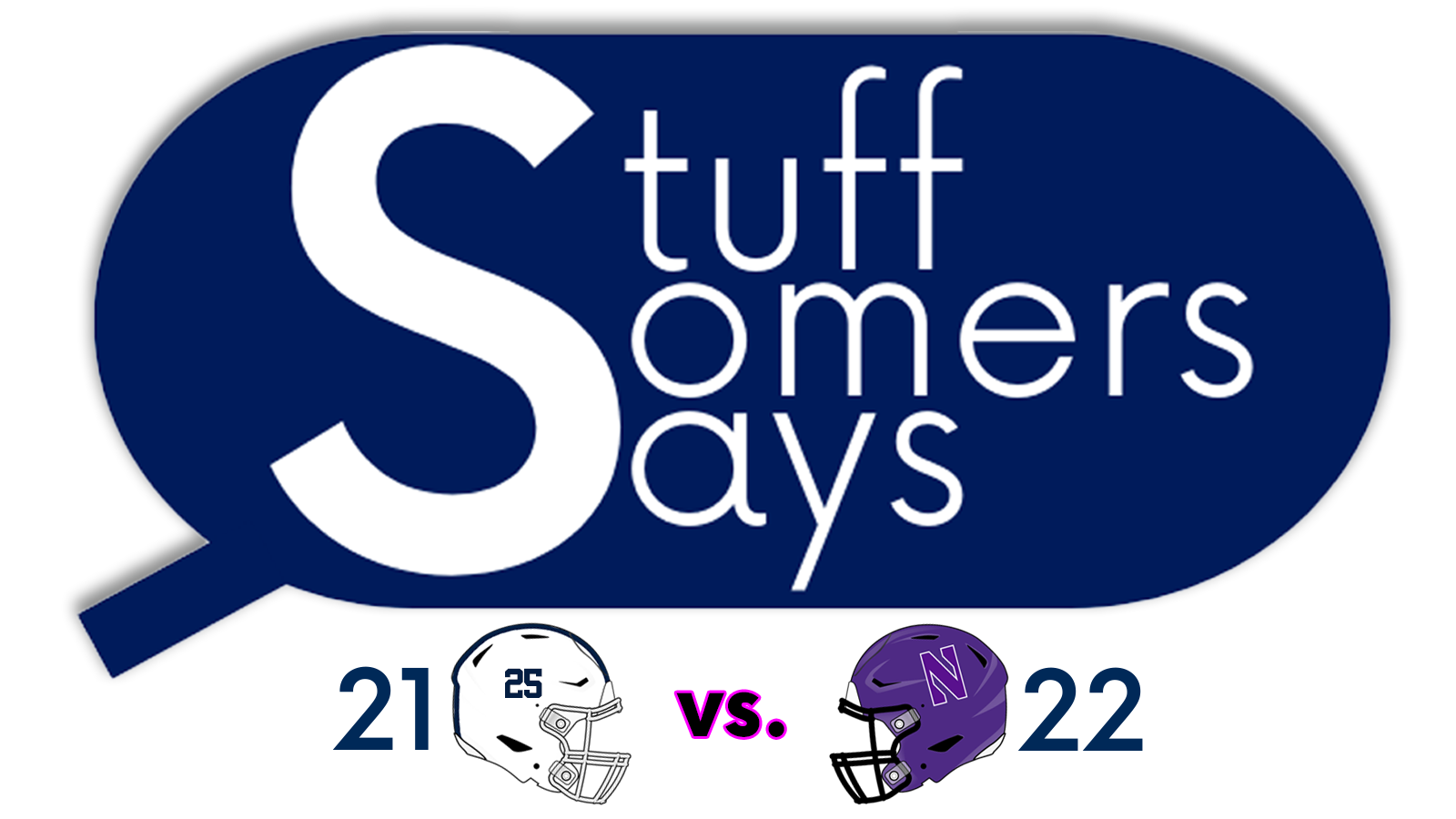
It may have gotten lost in the shuffle of a postseason coming to an end and a hectic dash to see who is and isn’t returning for 2025, but one quote caught my attention regarding Penn State’s spot in the NIL world.
In the midst of Penn State’s College Football Playoff run – and the hustle and bustle that’s happened after, one quote from Happy Valley United general manager Jen Ferrang may show just how far Penn State’s NIL progress has come.
“Penn State, we need the masses and the scale to [compete at the highest level],” Ferrang said in an interview with Sports Business Journal. “Because we don’t have a Phil Knight. We don’t have the Tysons. We don’t have Dave Portnoy. We don’t have Larry Ellison.
“We need to motivate and get the masses to take action. And we’ve brought some new people into the fold that run big businesses that are really interested and motivated to get Penn State to the level we all want to stay.”
The quote is a part of a larger theme that’s shined in the days since Penn State’s season came to an end. It appears Penn Staters – with big and small bank accounts – are starting to not just donate but understand the value that supporting NIL collectives holds.
It’s refreshing progress that has been both subtle and notable in terms of how far Penn State has come with the biggest wild card in college athletics.
Penn State did not get off to a great start with its NIL collectives.
In the beginning there was Success With Honor – which was a collective built around the ideals that this is Penn State, and at Penn State, we’re going to do things the right way.
However, it had an air of exclusion – and at times, lack of understanding by the masses.
The virtue of Success With Honor – the principle – was felt more for and by an older generation that grew up with that mantra in the 70s and 80s. The collective of Success With Honor didn’t market itself well to the masses – the average and particularly younger Penn State fans that are increasingly becoming a bigger slice of the pie.
While Success With Honor attempted to serve as the school’s primary NIL collective, a small, football-dedicated collective, Lions Legacy Club, sprung up as well.
Its creation created more confusion, particularly those not well connected or well educated on the inner workings of the NIL space. For many, there was a barrier to entry with the NIL that was not of fiscal obligation but rather educational understanding.
“If I’m donating to the Nittany Lion Club, why do I need to donate elsewhere?” was a common retort to the idea of NIL around these parts.
And that question was not being effectively answered by either of the collectives.
The progress was sped up after some public infighting between the two groups hit a boiling point in the time around of former Penn State men’s basketball coach Micah Shrewsberry’s departure.
The online clash between Jay Paterno and Michael Mauti may not have been the direct push needed by Pat Kraft and company for a unified front. However it does seem to be a cornerstone – and corner-turning – moment in the progress made.
Happy Valley United launched in June 2023, just a few months after Shrewsberry’s departure and legitimate questions were being asked of the progress made in the NIL front.
With the new, unified singular brand, Penn State and Happy Valley United offered consistent messaging and consistent branding. It also offered improved communication to those average fans – not just the big fish.
Happy Valley United took subtle steps during the 2023 football season and into the basketball season before seeming to hit its stride in the 2024 season. There was consistent messaging throughout Beaver Stadium and the efforts were much more visible both in person and online. Happy Valley United has become ingrained as an essential part of Penn State’s athletic department – even when it needs to keep a distance for NCAA bylaw reasons.
This was an about-face from where Penn State was in early 2023 where even a simple Google search yielded messy results for the NIL program.
And it appears that Penn Staters, ones with big bank accounts and more importantly the more numerous ones with smaller wallets, are open to it.
Ferrang’s comment about the fact that the masses need to be evangelized is true and fair.
The collective had a visible presence as a part of the Penn State playoff run – and fans are starting to accept that there’s at least some correlation between the two efforts. There’s legitimate understanding for Penn State fans – who aren’t mega donors by any means – but rather ones who are the “average” fan.
It felt like previously, however, those fans were almost ignored – even when the shear number of them dwarfs those purported big dollar donors that Penn State has — and the ones Happy Valley United lists. The average fan may donate just once for their seat license per year to the Nittany Lion Club or they might show up to one or two football games per season and occasionally make the trek to Pegula Ice Arena and the Bryce Jordan Center.
But they still have money. They still want to contribute. They just needed clear reasoning as to why.
In a lot of ways, even if the average fan is being asked to give up money, rather than get it, NIL at least at Penn State has become more accessible.
It also can be felt with the results most visibly on the field and fans will be reluctant to give that momentum up.
As in any year with college football – and college athletics – as one season comes to an end, questions begin to rush about who is and isn’t returning. If Penn State is going to have a crack at making a deep playoff run again, it needs key pieces like Drew Allar, Nicholas Singleton, Kaytron Allen and Dani Denis Sutton to come back.
And it appears that sweetening the pot – not just sowing hope into a legitimate crack at a national title next year – worked.
“Everyone’s finally getting it now,” Rich Stankewicz said in an interview with The Athletic’s Audrey Snyder. “Winning is a cure-all. People have seen the success on the field, they’re now seeing our success with retention of players, and NIL is a small part of player retention. We wouldn’t be retaining players at the rate we are without them all being in it for each other and for the locker room.”
Those four players – plus several others – are back for 2025, and that doesn’t happen without Happy Valley United.
As Ferrang told David Ubben in a story with The Athletic, retention is the primary focus for the Penn State collective’s budget. Those searching for the righteousness of things being done a certain way can take solace in the fact the money is going to Penn Staters and those looking for results overall can see the correlation after the 2024 season.
While numbers fly about just how much other schools have, Penn State fans are starting to get a better understanding of where Happy Valley United is financially too. In the article, Ferrange acknowledges Happy Valley United dished out more than $10 million to the football roster “but declined to comment on whether its investment exceeded $15 million.”
Even if that’s behind the reported $20 million that Ohio State has – Penn State’s athletic department nemesis in more ways than one – it’s still not-insignificant amount of cash.
It doesn’t happen without the education and awareness that’s been poured into the collective.
And yes, it takes a few big benefactors to get there as well but the acknowledgement and leverage of the “masses” feels like the biggest improvement Penn State’s collective had made since it became a unified front.
If you’ve enjoyed this content, please subscribe to Stuff Somers Says With Steve on YouTube. Or join our newsletter by entering your email below.

